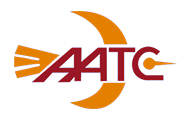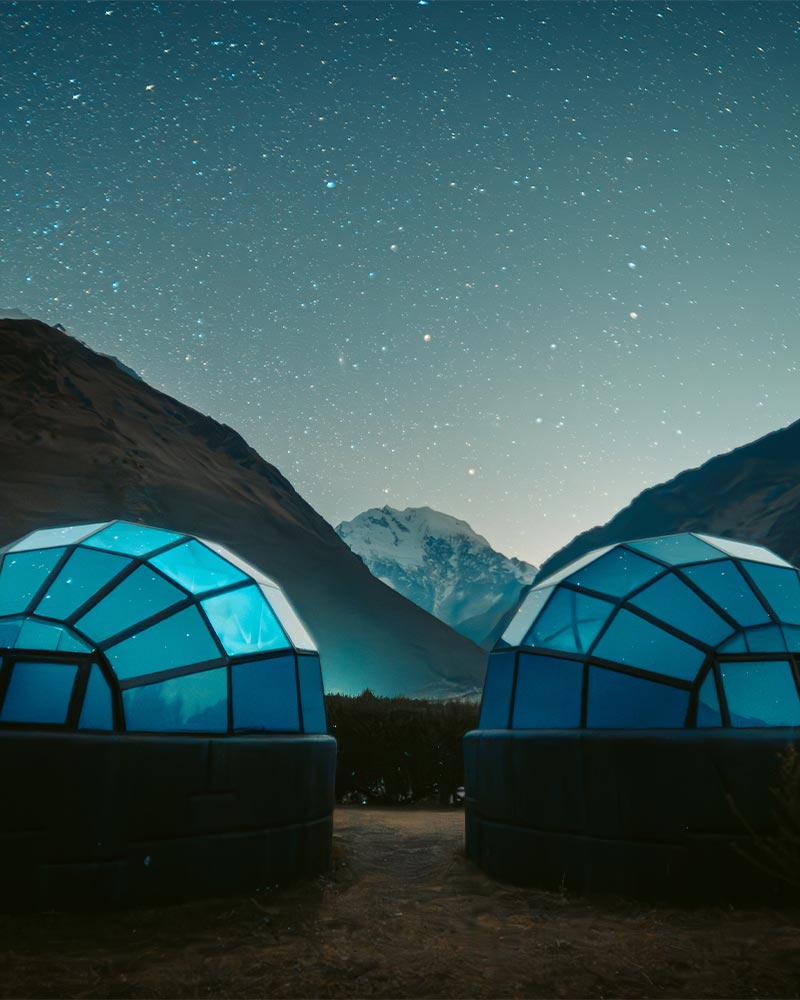Are you planning the exciting Salkantay trek to Machu Picchu? We understand that you may have many questions during the process. But don't worry; we're here to help! We have carefully compiled our travelers' most frequently asked questions for Salkantay Trek address all your concerns.
Before sending us a general inquiry, we recommend exploring this page. Here you will find all the information you need about the Salkantay trek and your visit to Peru. From practical tips to important details, we have all the answers you're looking for.
We are here to make your Salkantay trek unforgettable from the very first step.
Are you planning the exciting Salkantay trek to Machu Picchu? We understand that you may have many questions during the process. But don't worry; we're here to help! We have carefully compiled our travelers' most frequently asked questions for Salkantay Trek address all your concerns.
Before sending us a general inquiry, we recommend exploring this page. Here you will find all the information you need about the Salkantay trek and your visit to Peru. From practical tips to important details, we have all the answers you're looking for.
We are here to make your Salkantay trek unforgettable from the very first step.
Frequent Questions
Here is a list of the frequently asked questions of our passengers
-
Is the Salkantay Trek worth it?
Without a doubt, the Salkantay Trek is known as the best alternative route to Machu Picchu, and many would even argue that it’s better than the world-famous Inca Trail. It’s an adventurous route and comes with some challenges, but you’ll also be rewarded with incredible views and fantastic, unique experiences.
-
Is the Salkantay trail Difficult?
The Salkantay trek to Machu Picchu is considered moderate to challenging. The most demanding section of the route takes place on the second day, when you ascend the imposing Salkantay Pass, located at 4,600 meters above sea level (15,092 feet). This three-hour climb is a real challenge for travelers due to the high altitude and the physical demands of the terrain.
The first afternoon also requires significant effort as you hike up to the beautiful Humantay Lake, although it is a shorter walk. In contrast, days 3 and 4 are more relaxed, featuring long and gradual descents.
Keep in mind that, due to the altitude and Andean terrain, most visitors consider any hike in Cusco to be challenging.
-
Can I do the Salkantay Trek if I have no previous hiking experience?
The Salkantay Trail is suitable for people with no previous hiking experience, although having done some hikes beforehand is recommended in order to fully enjoy the experience and avoid any setbacks. During the journey, you can walk at your own pace and will have the constant support of expert guides and local muleteers.
However, it’s important to note that even though you'll be accompanied by a professional team, moderate physical preparation is advised before starting the trek. Be sure to carefully review the information under the question "How can I prepare physically for the trek?" 😉
-
Is Salkantay Harder than the Inca Trail?
Both the Salkantay trek and the Inca Trail present challenges, but their level of difficulty can vary depending on your personal preferences. The Salkantay trek can be more demanding in terms of terrain and altitude, while the Inca Trail may be difficult due to its length and steep steps.
The choice between the two will depend on your fitness level, although many hikers agree that the Inca Trail is slightly more difficult.
-
What are the main differences between the Salkantay trek and the Inca Trail?
- Difficulty level: The Inca Trail is slightly more difficult due to its constant ascents and descents over stone stairways. The Salkantay route becomes more relaxed from the third day, with more downhill sections.
- Crowds: The Inca Trail is significantly more crowded, while the Salkantay trek offers a quieter experience with fewer hikers.
- Comfort: The Salkantay trek provides greater comfort, with bathrooms, showers, and pleasant accommodations. On the Inca Trail, you sleep in tents under more basic conditions.
- Final accommodation: On the Salkantay route, you sleep in a hotel in Aguas Calientes before visiting Machu Picchu. On the Inca Trail, you arrive directly at Machu Picchu through the Sun Gate (Inti Punku) at dawn on the final day.
- Cost: The Inca Trail is considerably more expensive due to limited permits and more complex logistics.
- Permits and availability: The Inca Trail requires a special permit with a daily limit of 500 people (including staff). The Salkantay trek only requires availability for Machu Picchu tickets and accommodations.
- Departure flexibility: A minimum of 2 people is required to confirm a group on the Inca Trail. In contrast, the Salkantay trek has departures almost every day, allowing solo travelers to easily join existing groups.
- Scenery and diversity: The Salkantay trek offers greater landscape variety, from snow-capped mountains to cloud forest. The Inca Trail focuses more on archaeological sites along an ancient path.
-
How Far Do We Walk Each Day?
You’ll walk for around 7 hours per day, but the second day is longer and the most challenging. You can find the exact hiking times per day in our different itineraries, which vary depending on the trek’s duration. Still, here’s a brief summary of the distances you'll cover each morning on the classic 5-day Salkantay trek:
- DAY 1 — 10 km / 6.21 miles
- DAY 2 — 23.5 km / 14.6 miles
- DAY 3 — 17 km / 10.56 miles
- DAY 4 — 25 km / 15.53 miles
- DAY 5 — 3 km / 1.86 miles
-
How Much Does the Salkantay Trek Cost?
The price of the Salkantay trek varies depending on the option you choose. Below is a summary of the costs for each travel option. Please note that the price is per person for a group tour:
- HUMANTAY LAKE & SALKANTAY PASS 2 DAYS — US$ 280
- SALKANTAY CHALLENGE 3 DAYS — US$ 550
- SALKANTAY SHORT 4 DAYS — US$ 620
- SALKANTAY CLASSIC 5 DAYS — US$ 695
- SALKANTAY PREMIUM 5 DAYS — US$ 1095
- SALKANTAY PREMIUM PRIVATE 5 DAYS — US$ 1600
- SALKANTAY & INCA TRAIL 6 DAYS — US$ 1095
- SALKANTAY & INCA TRAIL 7 DAYS — US$ 1250
- SALKANTAY IMPERIAL 8 DAYS — US$ 1100
- ANDEAN EXPLORER 9 DAYS — 1200
-
Can I Rent Equipment for the Salkantay Trek?
Of course! On all our treks, we provide accommodation, and we also offer various camping items available for rent if you’d like more comfort during your adventure. All our equipment is high-quality and designed to withstand the conditions of the Andean climate, ensuring your comfort and safety during the hike.
- A sleeping bag for -15°C and a sleeping bag liner.
- Adjustable walking sticks.
Of course, if you already have this gear, you’re welcome to bring it with you. Just remember to consider the weight limit (5 kg per person), as your heavier luggage will be carried by our porters and muleteers.
-
Is it necessary to use Trekking Poles during Salkantay Trek?
Trekking poles during the Salkantay Trek is optional and depends on your personal preferences. However, we recommend bringing a pair to provide additional stability and reduce the impact on your knees while ascending and descending on uneven terrain.
-
How Can I Prepare Physically for the Trek?
The Salkantay trek to Machu Picchu is relatively challenging, especially on the second day. The main difficulty is the altitude, as the route climbs up to 4,600 meters above sea level (15,092 feet). On some days, the hike can last up to 10 hours, covering distances of up to 15 kilometers (9.3 miles), which can present some challenges along the way.
To enjoy the experience more comfortably and without setbacks, it’s recommended to have proper physical preparation before beginning the adventure.
- Before departure, do cardiovascular exercises such as regular walking. If possible, climb stairs or walk uphill.
- Do strength training to build your muscles, especially in the legs and back.
- Make sure to arrive in Cusco 2 or 3 days before starting the excursion to acclimatize properly. Please do so to avoid increasing the risk of experiencing altitude sickness during the route which may require you to return to Cusco.
- Use well-worn hiking boots. New footwear on the trail can cause unwanted pain.
-
Is Water Included on the Trip?
Yes. You’ll need to ensure you have enough water to last the first morning, but after this, we’ll provide boiled water at every breakfast, lunch, and dinner. The water is clean and safe to drink, so you don’t need to worry about that.
You will need to bring your own water bottle or Camelbak to refill. We don’t recommend plastic bottles, as we believe in sustainable tourism and take great care of the route.
If you need extra water at any stage or any other drink, you’ll find the occasional shop or kiosk along the way that sells them and snacks.
-
What Is the Food Like on the Trek?
Our professional chefs are experts in creating delicious dishes that make food one of the highlights of your Salkantay Trek journey. With careful nutritional planning, we have crafted an exceptional menu that will provide you with the necessary energy throughout the route.
Each meal offers various options with fresh, local ingredients, covering all food groups. If you have allergies or dietary preferences, don't worry. If you inform us in advance, we will ensure that you enjoy meals tailored to your needs.
Additionally, we will provide you with a cloth bag to fill with snacks each day. During the "tea time" around 5 pm, you can enjoy hot beverages and appetizers at all the campsites, keeping you active until dinner. You can rest assured that you won't go hungry and will have the opportunity to taste many typical Peruvian dishes during this unforgettable experience.
-
Do I Need to Bring Extra Money for the Trek?
Although everything is included and paid in advance, you must bring extra money. We suggest 200 or 300 Peruvian soles. This is because, in rural areas of the country, there will not be the option of paying in dollars.
You will likely not need this money, or not all of it. However, it is always better to carry cash in an emergency.
-
Do I Need a Permit for the Salkantay Route?
Except for the Salkantay routes that are combined with the Inca Trail, the Salkantay treks do not require a special permit. Generally, there is an entrance fee of 20 soles at the start of the trek, but if you book with us, this fee is already included in your package.
-
Can I do the Salkantay Trek with young children?
Yes, it is possible to do the Salkantay Trek with young children. However, we recommend consulting a doctor before undertaking the trek with kids, especially if they have any pre-existing medical conditions.
It is also essential to consider the pace and needs of the children during the journey. They may require frequent breaks and proper hydration to maintain their energy levels. During the first two days of the route, you can find locals offering horseback services, which can greatly help the more challenging sections of the Salkantay Trek.
-
What is the Recommended Age for the Salkantay Trek?
The Salkantay Trek is relatively challenging. Therefore, we suggest a minimum age of 12 years, with good health, physical preparation, and at least three days of acclimatization to successfully complete the journey.
-
What type of Accommodation is Provided during the Salkantay Trek?
At Salkantay Trekking, we offer different campsites for each night during the Salkantay Trek. If you choose to do the classic trek, you will have the opportunity to spend the night at:
- Sky Camp in Soraypampa: On the first night, you’ll sleep in our dome-shaped glass-roofed igloos. They’re located in front of two sacred mountains: Humantay and Salkantay.
- Base Camp in Soraypampa: This alternative allows you to connect with nature on another level. You’ll sleep in spacious and comfortable tents, surrounded by mountains and under a starry sky, while listening to the soothing sounds of the river and wind.
- Mountain Sky View in Collpapampa: Here you’ll enjoy glamping comfort. The rooms offer a panoramic view of the landscape through large windows. Each lodge has a private bathroom and hot shower—perfect for relaxing after a long day.
- Jungle Domes in Lucmabamba: Located at the entrance to the Peruvian jungle, the domes are surrounded by lush vegetation and designed to blend into the environment. They provide perfect insulation, maintaining a pleasant temperature while keeping insects and mosquitoes out.
- Super Jungle Domes in Lucmabamba: These combine luxury, comfort, and connection with nature, offering spacious beds, private bathrooms, Wi-Fi, and spectacular views. Surrounded by tropical rainforest and greenery, they provide an immersive experience with the comfort of a 5-star hotel.
Salkantay Trekking offers the most incredible and exclusive campsites to relax after a long day of hiking.
-
Can I request the accommodation service separately?
We regret to inform you that we do not offer accommodation services separately. Each of them is designed as part of complete itineraries that has a minimum duration of two days. If you would like more information about any of our itineraries, please contact us; we will be happy to provide you with additional details.
-
What is the Difference between the Classic Salkantay Trek and the Premium Salkantay Trek?
Classic Salkantay Trek 5 Days Premium Salkantay Trek 5 Days Price US$ 695 US$ 1095 Add-ons - One Duffle Bag (5 kg / 11 lb)
- Sleeping bag
- Trekking poles
- One Duffle Bag (10 kg / 222 lb)
- 01 Emergency Horse from Soraypampa to Salkantay Pass
Day 1 - Entrance to Humantay Lake and start of the Salkantay trek
- Meals: Breakfast, Lunch and dinner.
- Campsite: Sky Camp
- Entrance to Humantay Lake and start of the Salkantay trek
- Meals: Breakfast, lunch, and dinner.
- Campsite: Sky Camp
Day 2 - Meals: Breakfast, lunch, and dinner.
- Exclusive Campsite: Mountain Sky View in Collpapampa.
- Meals: Breakfast, lunch, and dinner.
- Exclusive Campsite: Mountain Sky View in Collpapampa.
- Emergency horse from Soraypampa to Salkantay Pass
Day 3 - Meals: Breakfast, lunch, and dinner.
- Campsite: Jungle Domes in Lucmabamba.
- Meals: Breakfast, lunch, and dinner.
- Campsite: Super Jungle Domes in Lucmabamba.
- Transport and entrance to Cocalmayo Hot Springs
Day 4 - Meals: Breakfast, lunch, and dinner.
- Standard Hotel in Aguas Calientes.
- Meals: Breakfast, lunch, and dinner.
- Train Ticket from Hydroelectric train ticket to Aguas Calientes.
- Upgraded Hotel in Aguas Calientes.
Day 5 - Meals: Breakfast
- Entrance ticket to Machu Picchu (Circuit 2)
- One-way bus ticket from Aguas Calientes to Machu Picchu (one way)
- PeruRail Expedition Train Ticket from Aguas Calientes to Ollantaytambo (or IncaRail Voyager Service, subject to availability).
- Return transport from Ollantaytambo to Cusco.
- Meals: Breakfast and Lunch
- Entrance ticket to Machu Picchu (Circuit 2).
- Round Trip Bus ticket from Aguas Calientes to Machu Picchu
- PeruRail Vistadome Observatory Train ticket from Aguas Calientes to Ollantaytambo.
- Return transport from Ollantaytambo to Cusco.
-
What is the difference between the 4 and 5-day treks to Salkantay?
The main difference between the 4-day and 5-day Salkantay treks lies in the duration and variation of the trail and route. Both options are very popular among hikers who want to experience the majesty of the Andes and the natural beauty of the region, but there’s a key point of divergence on day 3. Below are the main differences between the two:
Short Salkantay Trek 4 Days Classic Salkantay Trek 5 Days Price US$ 620 US$ 695 Day 1 - Entrance to Humantay Lake and start of the Salkantay trek
- Meals: Breakfast, Lunch and dinner
- Camp: Sky Camp
- Entrance to Humantay Lake and start of the Salkantay trek
- Meals: Breakfast, Lunch and dinner
- Camp: Sky Camp
Day 2 - Meals: Breakfast, lunch, and dinner.
- Exclusive Campsite: Mountain Sky View in Collpapampa.
- Meals: Breakfast, lunch, and dinner.
- Exclusive Campsite: Mountain Sky View in Collpapampa.
Day 3 - Meals: Breakfast, lunch, and dinner.
- Transport from La Playa to Hidroeléctrica.
- Standard hotel in Aguas Calientes.
- Meals: Breakfast, lunch, and dinner.
- Optional activity: Visit the thermal baths of Cocalmayo (additional cost).
- Campsite: Jungle Domes in Lucmabamba.
Day 4 - Meals: Breakfast
- Entrance ticket to Machu Picchu (circuit 2).
- Bus ticket from Aguas Calientes to Machu Picchu (one way).
- Train ticket from Aguas Calientes to Ollantaytambo.
- Return transportation from Ollantaytambo to Cusco.
- Meals: Breakfast, lunch, and dinner.
- Visit the archaeological site of Llactapata.
- Standard hotel in Aguas Calientes.
Day 5 X - Meals: Breakfast
- Entrance ticket to Machu Picchu (circuit 2).
- Bus ticket from Aguas Calientes to Machu Picchu (one way).
- Train ticket from Aguas Calientes to Ollantaytambo.
- Return transportation from Ollantaytambo to Cusco.
-
Will I Have WiFi During the Trek?
If you wish to contact your friends and family back home, WiFi is available by the hour at our Salkantay Trail camps. You will spend the fourth night at a hotel in Aguas Calientes, where you will also have access to WiFi.
-
Will I Be Able to Charge My Devices During the Trek?
Yes. At each of our camps, you will have the opportunity to charge your devices. However, not all camps offer the option of leaving your device charging overnight.
-
Will I Have Access to Bathrooms Along the Trek?
Yes. At each campsite, we have bathroom facilities. You’ll also find the occasional bathroom along the trek and at each lunch stop.
-
Will I Be Able to Have a Shower During the Trek?
Yes, it’s possible to shower along the Salkantay route, but not all campsites have showers available.
- Soraypampa (1st campsite): No showers available.
- Collpapampa (2nd Campsite): Hot showers are available at no extra cost.
- Lucmabamba (3rd Campsite): Hot showers are available at no extra cost.
- Hotel in Aguas Calientes (4th Night): Hot showers are available at no extra cost.
-
Should I Rent an Extra Horse on the Trek?
If you're concerned about the hike's difficulty or the impact of altitude, we offer you the option to rent a horse at an additional cost.
- If you wish to rent a horse on the first day of the hike (from Soraypampa Humantay Lake), the approximate cost is 80 soles.
- If you wish to rent a horse on the second day of the hike (from Soraypampa to Salkantay Pass), the approximate cost is 120 soles.
There’s no need to reserve the additional horse in advance. If you decide to take advantage of this option, you can do so at the time without any problem.
-
What is the Best Season to hike the Salkantay to Machu Picchu?
The answer to this question varies according to your preferences. If you want to visit Cusco during the dry season, then it is best to arrive between May and October. The rest of the year it rains most days and we can never be sure of a rain-free trip. June and July are the busiest months, so you should book well in advance. Also, at this time of year it gets cold at night.
On the other hand, you might not be too worried about the weather and would prefer to enjoy the trek without many other visitors. In this case, traveling during the wet season means there aren’t many people on the trail. Do keep in mind, though, that it’s closed during February.
Overall, the best time of year to come is in May or October. The crowds aren’t too big, and the weather is generally lovely. This way, you enjoy the best of both worlds.
-
Can I Join as a Solo Traveler?
Yes, you can! Solo travelers join us almost daily for our treks. Just keep in mind that you’ll likely have to share the accommodation with another solo traveler of the same sex, of course. If you prefer to have a single hotel room, we can arrange it for you for an extra.
-
What is the Weather Like during the Salkantay Trek?
The weather in Cusco and its surrounding areas can be unpredictable, making it difficult to know exactly what kind of weather you’ll encounter during the trek. You’ll start in the high Andes and gradually descend into the cloud forest, passing through various microclimates along the way.
However, we can assure you that the first night will be very cold, with temperatures potentially dropping to 0°C (32°F), so it's essential to bring warm clothing suitable for low nighttime temperatures. As you descend to lower altitudes and enter the Peruvian jungle, the climate becomes considerably warmer and more humid, with pleasant daytime temperatures ranging from 20°C to 25°C (68°F to 77°F). In these areas, you’ll be surrounded by tropical vegetation, and the weather tends to feel milder—but also more prone to rain.
The rainy season in Peru generally lasts from late October to April, though rain is always a possibility. Therefore, we recommend bringing a rain jacket or poncho for protection.
-
Can the Salkantay Trek be done in reverse, from Machu Picchu to Soraypampa?
Yes, it is possible to do the Salkantay Trek in reverse, from Machu Picchu to Soraypampa. However, it is important to note that this option is less common and less popular than the traditional route from Soraypampa to Machu Picchu. If you are interested in doing the Salkantay Trek in the reverse direction, we recommend consulting in advance to plan your trip and ensure you have an unforgettable experience.
Find the Perfect Destination in Peru
With astonishingly varied landscapes, stunning scenery, compelling history, and a legacy of fascinating cultures, there is truly something for everyone. Our expeditions in Peru are designed to showcase all that this country has to offer.
Our expeditions in Peru are designed to showcase all that this country has to offer.












